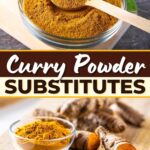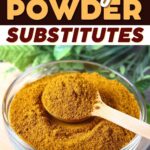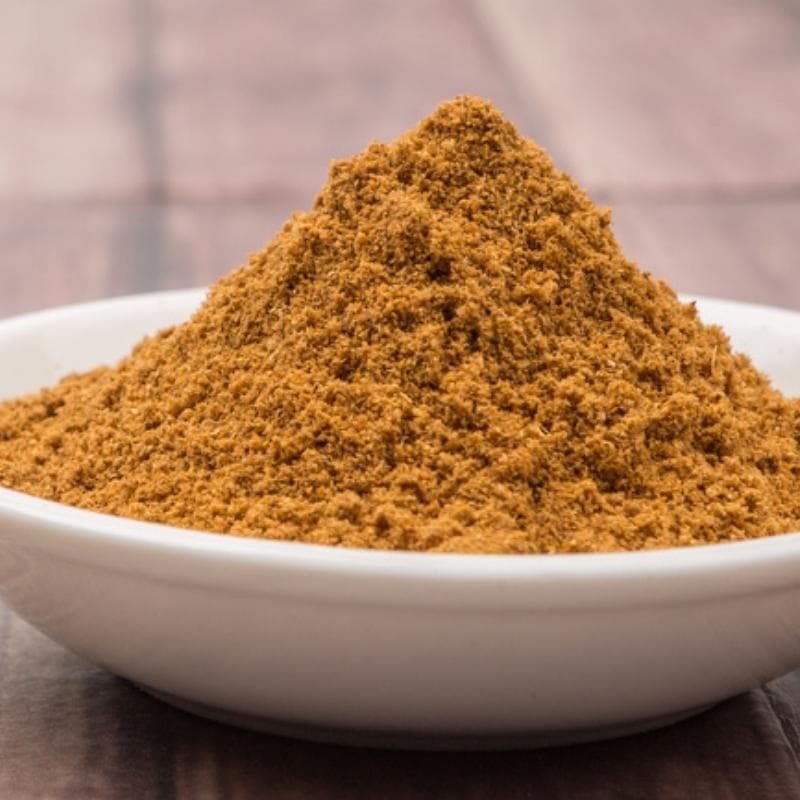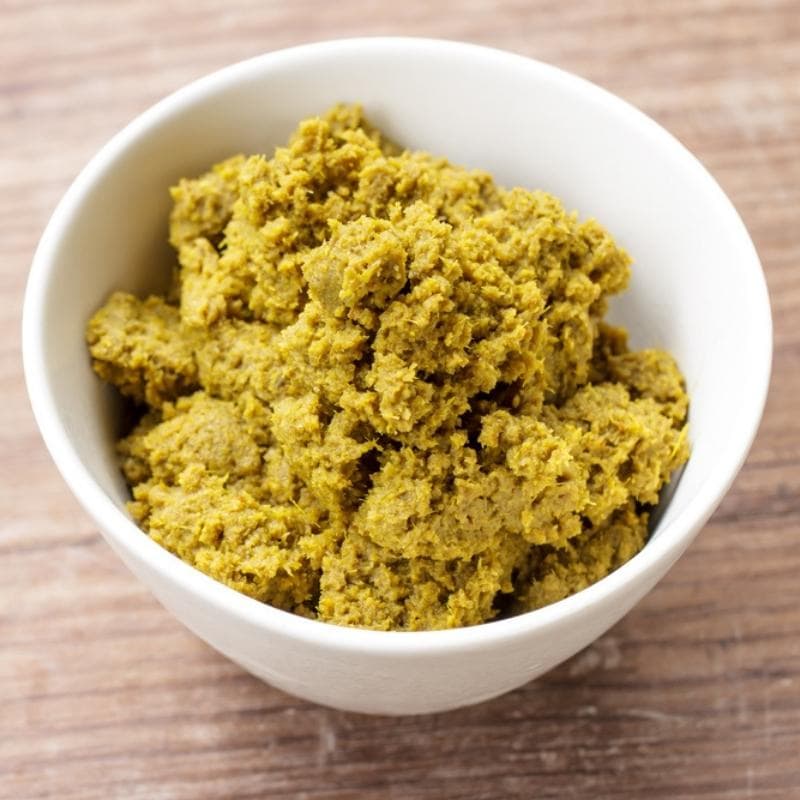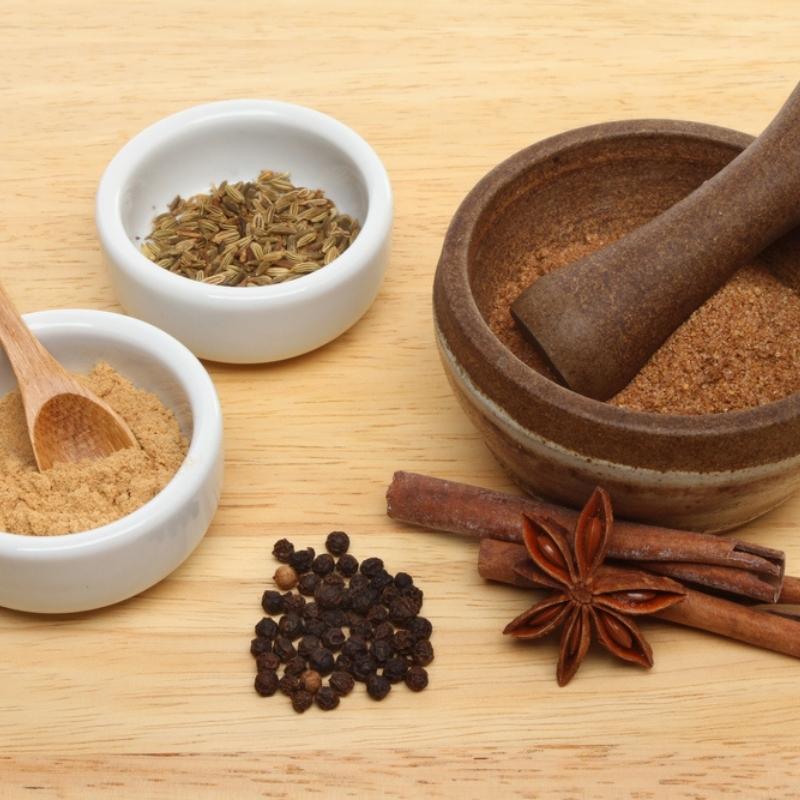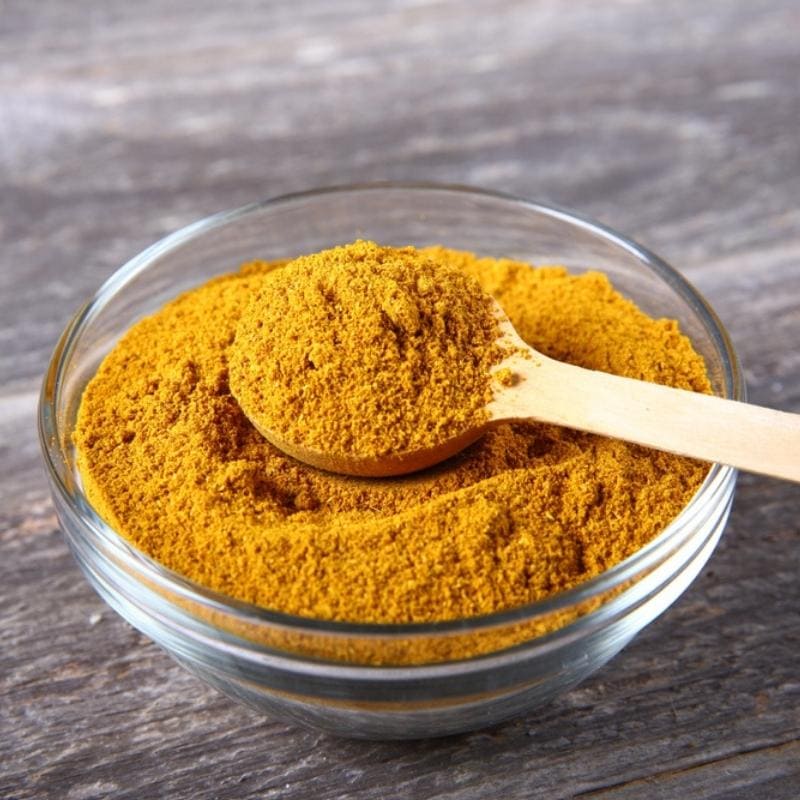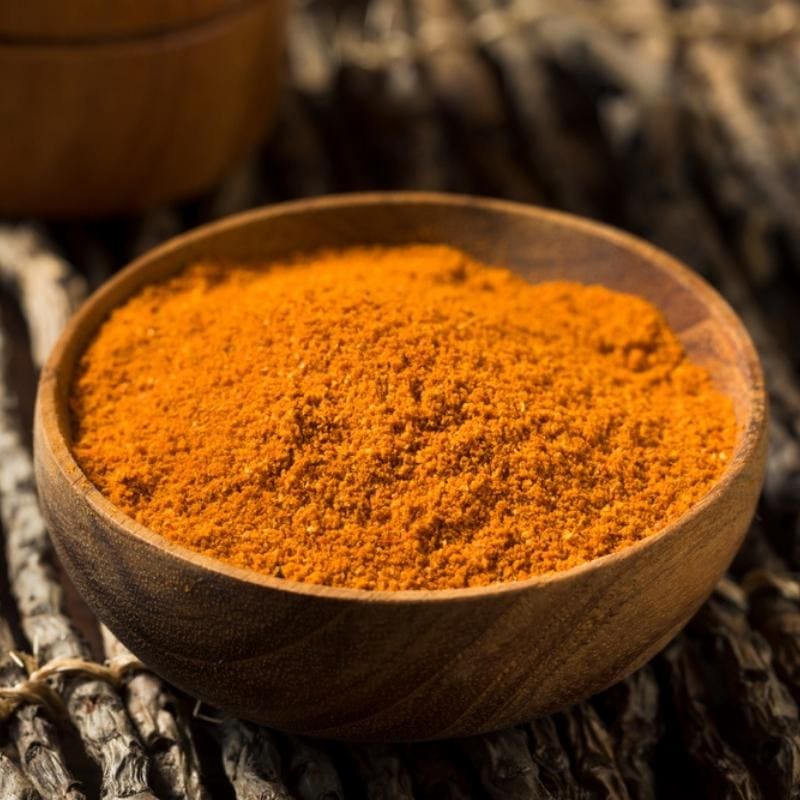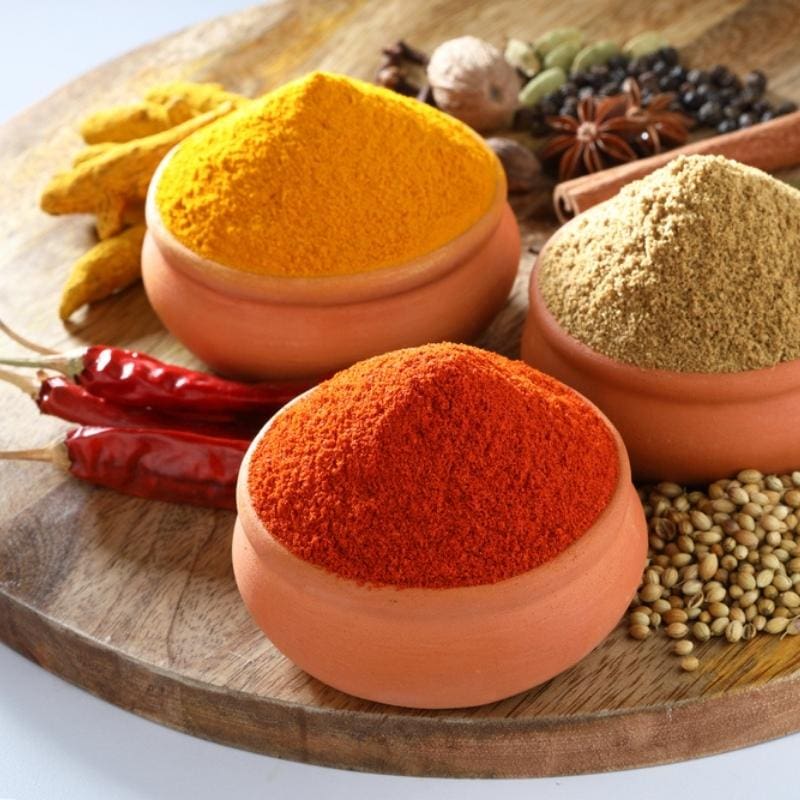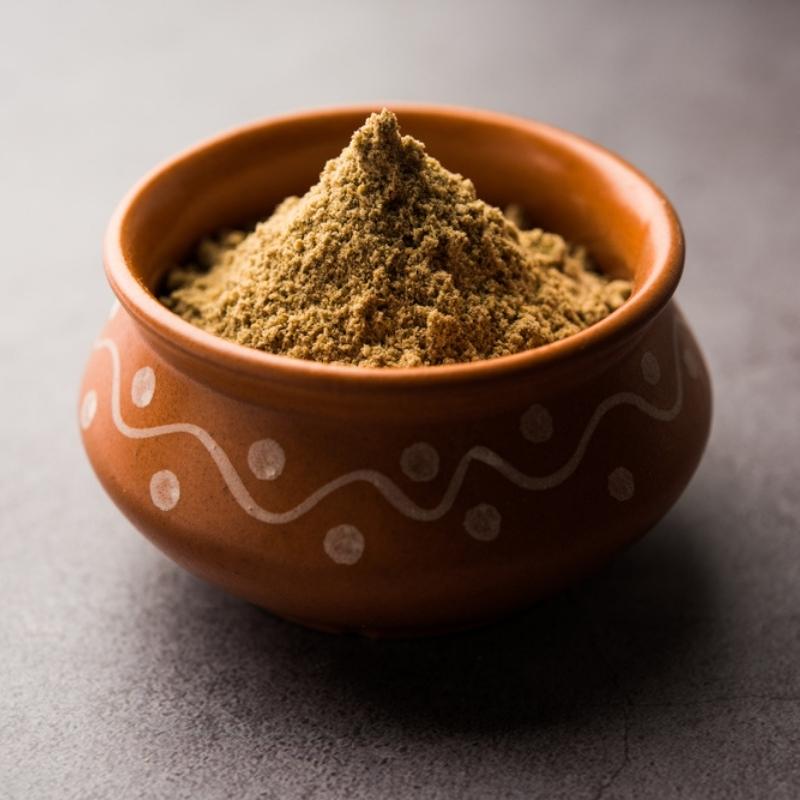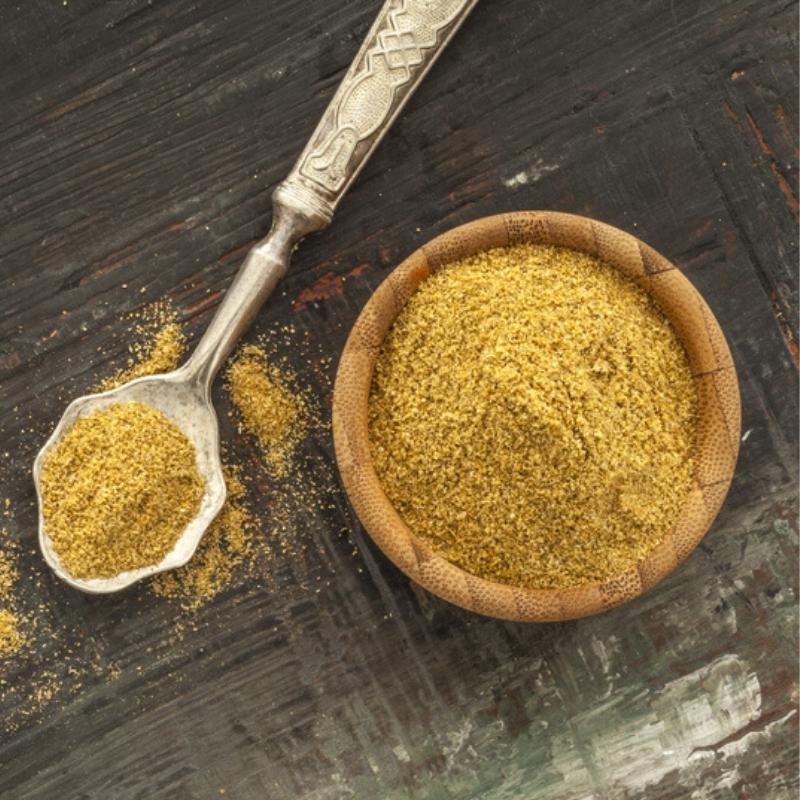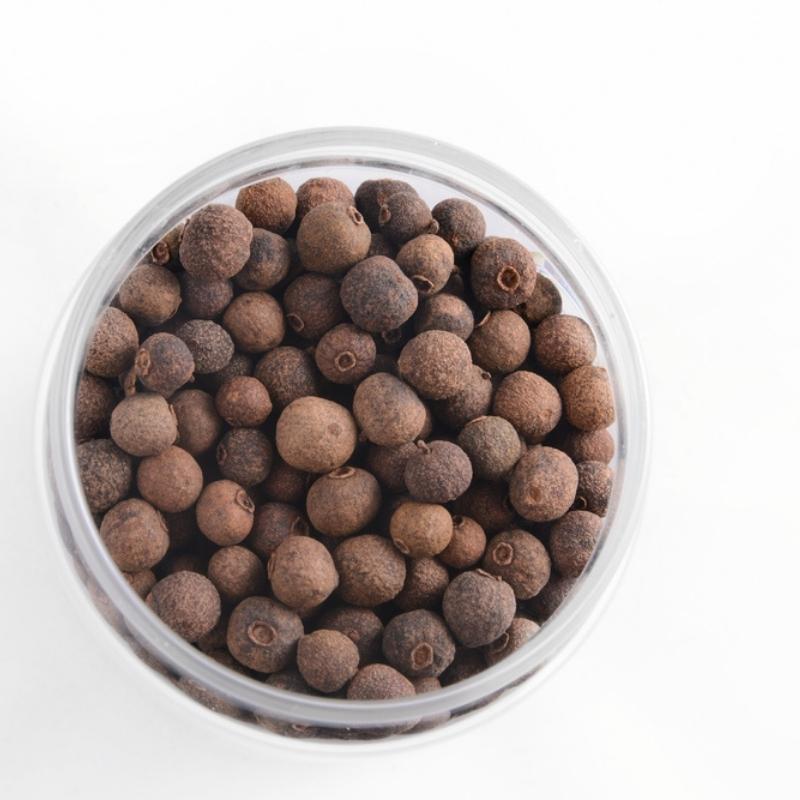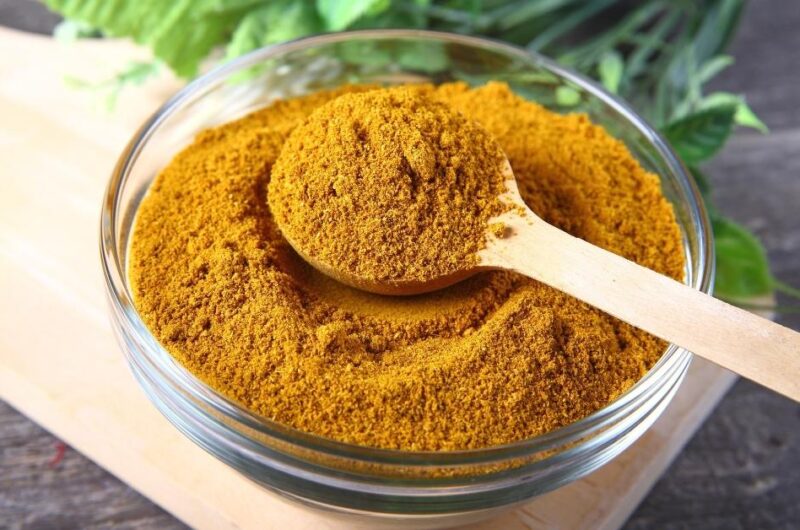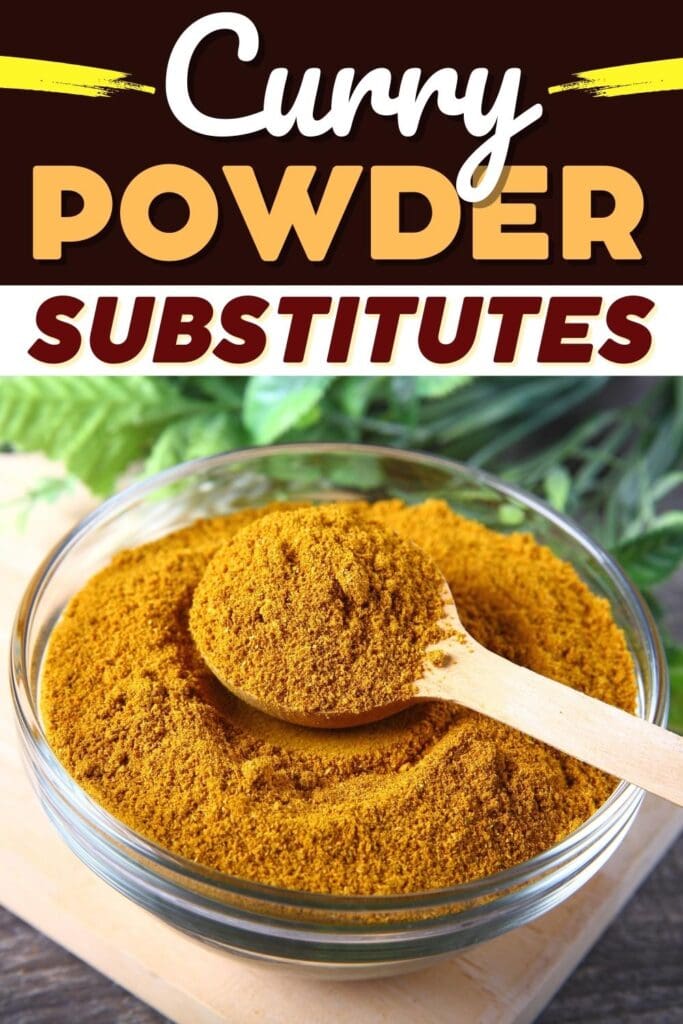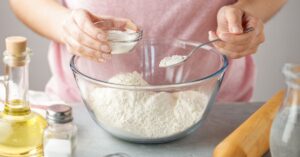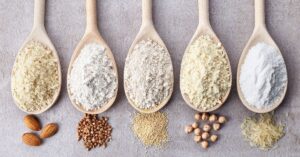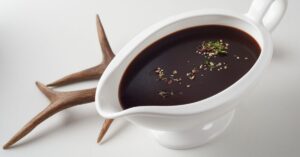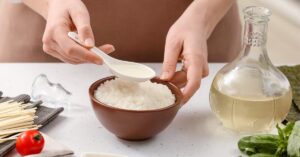It’s curry night, and you’re ready to whip up a big bowl of bone-warming curry. However, there’s one problem. There’s no curry powder in the cupboards. We’ve all been there! However, the main ingredients in most curry powder are cumin and coriander. So if you have these two, you can spare yourself another trip to the supermarket. Check out these simple curry powder replacements below to create the perfect bowl of curry sans curry powder.
What is Curry Powder Made Of?
Curry powder has an unmistakable warm, spicy, and savory aroma. There isn’t anything quite like it. However, did you know curry powder is just a blend of spices in your spice rack? The most common curry powders contain a combination of spices. These include allspice, coriander, turmeric, cumin, chili, fenugreek, celery, and salt. That’s it! As you travel to different regions, the flavor profile of curry powders changes. In Thai cooking, curry powder incorporates chili powder and ginger for a spicy kick. Indian curry powder is more warm and savory with additional cardamom. While all flavors of curry powder change depending upon the region, all curry powders share one thing in common. They utilize cumin and toasted coriander. If you used the last of your curry powder the last time you whipped up a batch, fear not! By getting a little inventive with your spice rack, plenty of substitutes are waiting for you.
Best Curry Powder Substitutes
1. Garam Masala
Garam masala is a beautiful substitute for curry powder. It boasts warm and savory notes from spices such as cinnamon, black pepper, cardamom, nutmeg, and cloves. Unlike traditional curry powder, garam masala is quite aromatic and bitter, so a little goes a long way. If you want to swap curry powder for garam masala, use a 1:1 ratio, but be sure to taste along the way. Sometimes, you may need to add more to get that perfect curry flavor. That’s half the fun of cooking curry, right? Tasting it and tinkering with spices!
2. Curry Paste
Curry paste has similar flavors to curry powder, with a few additions that amplify the flavor profile. Since it utilizes wet ingredients such as vegetable oil, garlic paste, lime, red chilis, and ginger, it’s quite a powerful substitute. I love using curry paste in curry, but you have to be careful with the ratio because it packs a powerful flavor punch. If you want to swap out powder for paste, you have to dilute it first. Dilute your curry paste with equal parts water, and use it in a 1:1 ratio (after it’s diluted).
3. Chinese 5 Spice
Chinese 5 spice doesn’t exactly taste like curry powder, but it provides that same warming effect. It contains curry-like herbs, including peppercorns, cloves, cinnamon, star anise, and fennel seeds. However, remember that the warm, sweet, salty, and bitter notes of Chinese 5 spices have similar properties to curry powder. But the flavor profile differs slightly. To replace curry with Chinese 5 spices, opt for a 1:1 ratio. The flavors of Chinese 5 spice are intense, but it’s not very spicy. For added heat, you can also throw in a dash of red pepper flakes to bring on the heat. Just be sure to add them slowly and always taste them along the way.
4. Sambar Powder
Sambar powder is one of the best replacements for curry powder. It boasts warming herbs and a kick of spice that perfectly replaces curry. If you check the ingredients label, many of the same spices in sambar powder are almost identical to curry powder. It contains herbs such as ground coriander seeds, ginger, garlic powder, clove powder, fenugreek, and black mustard seeds. You can use it as a 1:1 replacement for curry powder and achieve a nearly identical flavor profile.
5. Cumin + All Spice
Cumin is one of the main ingredients found in most curry powders. So if you have it, you’re halfway there to a replacement. Mixing cumin and all spices create that same warming effect and flavor profile without the extra spicy notes. To mix your cumin and allspice blend at home, mix equal parts of cumin with allspice. The flavors are similar but not as potent as curry powder, so you need to add just a little more to your curry dish. This replacement requires a 1.25:1 ratio of cumin and allspice to curry powder. If the recipe calls for one teaspoon of curry powder, you use 1 ¼ teaspoon of cumin and allspice.
6. Tandoori Masala
If you made Tandoori chicken one night for dinner, you likely have Tandoori Masala in your kitchen cupboards. Tandoori masala incorporates spices similar to curry powder. These include cumin, coriander, ginger, cloves, black pepper, cinnamon, nutmeg, fenugreek, and garlic powder. Since Tandoori masala has more savory spice notes than curry powder, you won’t need as much. You can use Tandoori masala as a .5:1 ratio. If the recipe calls for one teaspoon of curry powder, use ½ teaspoon of tandoori masala.
7. Turmeric + Coriander + Allspice
Time to dig into that spice rack! Turmeric, coriander, and allspice are great ways to replicate those warm, savory notes of curry powder. Turmeric is the main addition to this replication and earns just a touch of spice from a bit of coriander and allspice. While it offers similar warming notes, it’s not exactly spicy. For more heat, throw in some extra red pepper flakes. For this replication, you can use it as a 1:1 replacement.
8. Chaat Masala
Chaat masala is similar to garam masala, albeit a little sweeter. It’s composed of spices such as cumin, coriander, and pepper. It earns a sweeter flavor profile from citric acid, mint leaves, and mango powder. If you prefer your curry to be a little sweet, you might like chaat masala even more than curry power! Due to its delicate flavors, you can use it in a 1:1 ratio and throw in a few red pepper flakes for just a touch of heat as needed.
9. Cumin Powder + Chili Powder
Cumin and chili powder are great ways to create warming, spicy notes of traditional curry powder. Classic chili powder is composed of spices such as garlic powder, ground cayenne, onion powder, oregano, and paprika. This adds quite a bit of heat. Pair it with cumin, and you have an excellent spicy curry alternative. This substitute is quite powerful, so less is more. Use cumin and chili powder at a .5:1 ratio. If the recipe calls for one teaspoon of curry powder, use half a teaspoon of cumin and chili powder.
10. All Spice
If all else fails and you can’t use anything on this list, allspice works in a pinch. If you have ever cooked with allspice, you know that it packs a powerful and fragrant punch. It won’t provide the same complex depth of flavor as curry powder, but it does offer a lovely warming effect. When using allspice, less is more. Use allspice as a .25:1 swap when using it to replace curry powder. If the recipe calls for one teaspoon of curry powder, use ¼ teaspoon of allspice. Click on a star to rate it!
Average rating 5 / 5. Vote count: 1 No votes so far! Be the first to rate this post.
Share on social media: Let us improve this post!
